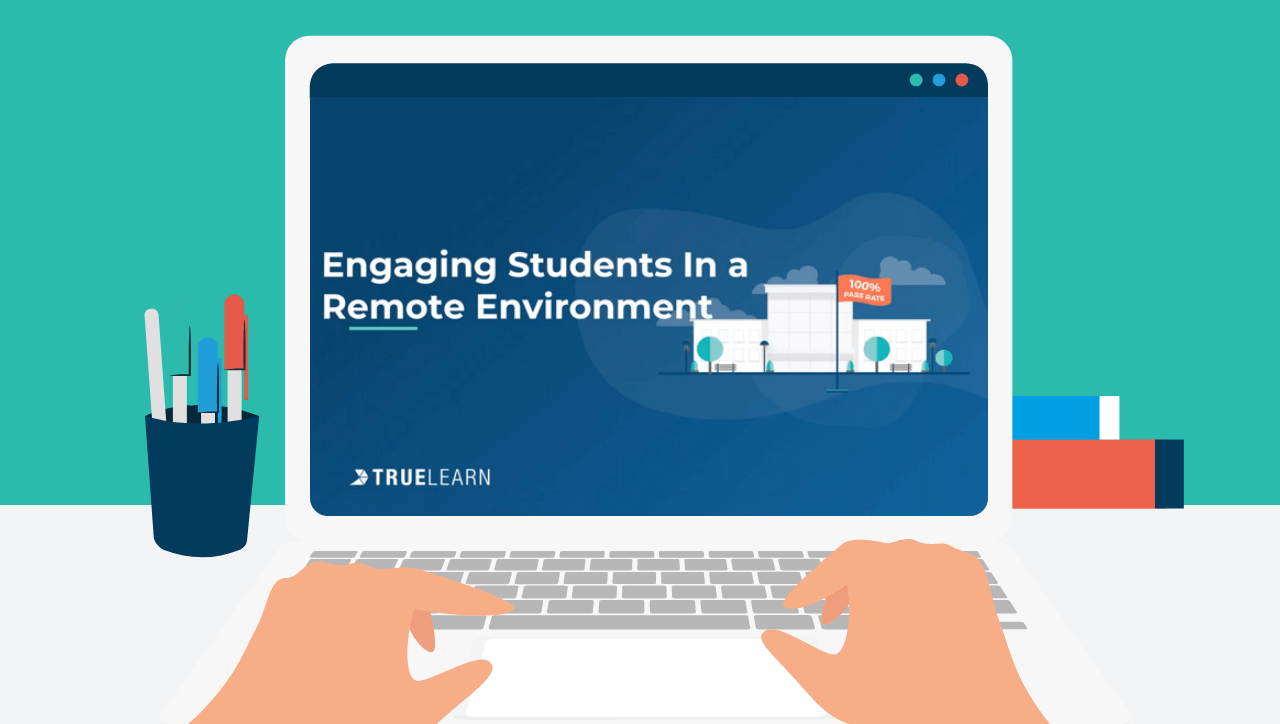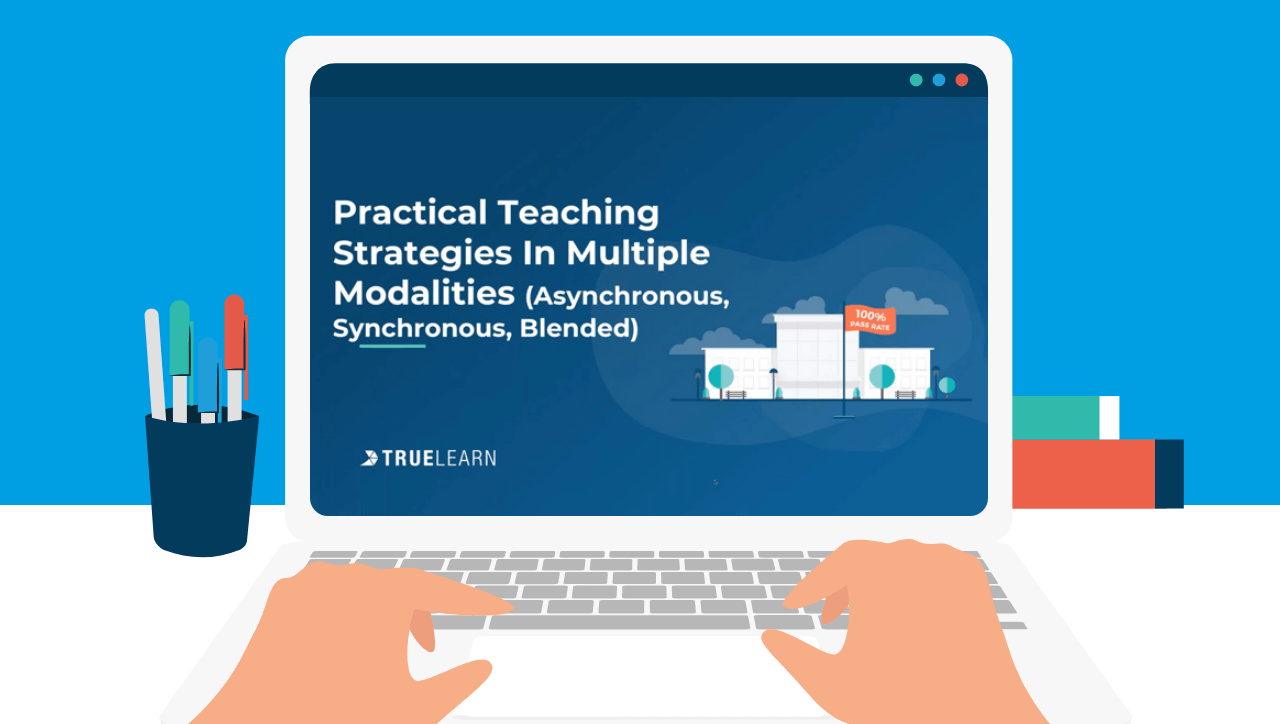Multimodal Learning vs Learning Styles: What Science Says

How do learners absorb, retain, and master information in the easiest and most efficient way? To answer this question, many educators—and learners—turn to the VARK model,1 an acronym that refers to the four most common learning styles:
| Visual | Aural (Auditory) | Read/Write | Kinesthetic |
|---|---|---|---|
| Learning through seeing | Learning through listening and speaking | Learning through reading and writing | Learning through doing and experiencing |
These learning styles are said to represent the best way learners receive information and ultimately learn the material taught. Often educators and learners will teach or approach their studies based on these perceived preferences for learning in an effort to achieve the greatest possible learning outcome.
While the learning styles theory is popular, science disagrees.
Limitations And Criticisms Of Learning Styles Theory
Critics question two core tenets of the learning styles theory: the validity of the learning instruments, and the meshing hypothesis1 that says aligning instructions with learning styles will enhance learning and lead to optimal academic outcomes. One systematic review of popular learning style models based on four psychometric criteria—internal consistency, test-retest reliability, construct validity, and predictive validity—cast doubts on most of the learning instruments.2 Meanwhile, a team of researchers who specialize in the psychology of learning reported that there are no credible findings to support the meshing hypothesis but that there is evidence to the contrary.1
Learning styles are, at best, learners’ preferences on ways to receive information and are subject to change, depending on variables like context and the environment.3 And while every learner has their preferred way of learning, it more often reflects their strengths or capabilities rather than aptitude for absorbing information.4 Furthermore, learners are not always able to accurately categorize their learning style; one study contrasted learners’ own perception against the results of a questionnaire and found less than 50% correlation.5

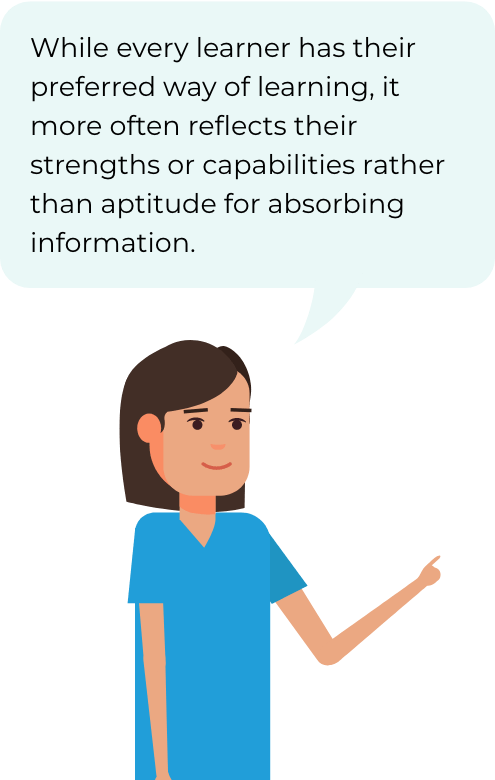
Labeled a “neuromyth”6 for its misconceptions about the brain, learning styles have also been criticized for their oversimplification7 of the learning process and ignoring learners’ individual traits such as cognitive patterns or cultural backgrounds. Learners who believe that they can only learn through that one specific style could end up adopting a fixed mindset,8 believing that intelligence is fixed and viewing learning challenges as insurmountable tasks that they are “not built for.” This limits their potential for learning and hinders their growth—qualities that contradict those of learners who have a growth mindset, which has been linked to better academic achievements and higher college retention.9
Therefore, educators must move away from limiting their teaching to fit specific learning preferences and instead, leverage a multimodal approach to engage learners through a mix of visual, auditory, reading, writing, and kinesthetic cues. This broad pedagogical approach has been shown to enhance learning outcomes10 as it encourages learners to tap into multiple avenues for learning at the same time. The more modalities a learner engages in throughout the learning process, the more deeply they will think and the better they will learn, remember, and understand the material being covered.11
Benefits Of Multimodal Learning in Healthcare
When healthcare educators embrace multimodal teaching in the classroom and clinical setting, they are effectively deploying active learning strategies and tools that result in a more engaging learning environment, allowing them to connect with all learners regardless of individual learning preferences.
The multimedia principle is one example—when words and visuals are combined (versus text-only inputs), it promotes active cognitive processing and learning on a deeper level.12 Audio-visual mnemonics is another proven solution: a multimodal active learning tool that empowers faster learning, better retention, and easier recall by breaking down complex concepts into easy-to-remember lessons, delivered through a mix of animated visuals, spoken words, and text.13 When learners have the opportunity to interact meaningfully with the content, their peers, and their educators, they will be more motivated to meet learning objectives and goals. Healthcare educators can drive this in both classroom and clinical settings by augmenting didactics with learning resources such as augmented relaity-enabled devices, 3D printed models, online quizzes, and data-driven assessment tools.14
Leveraging varied modes of delivery enables educators to ensure their learners are suitably equipped to lay a solid foundation of knowledge that can support higher-order thinking and cultivate critical skills that will contribute to long-term learning success.
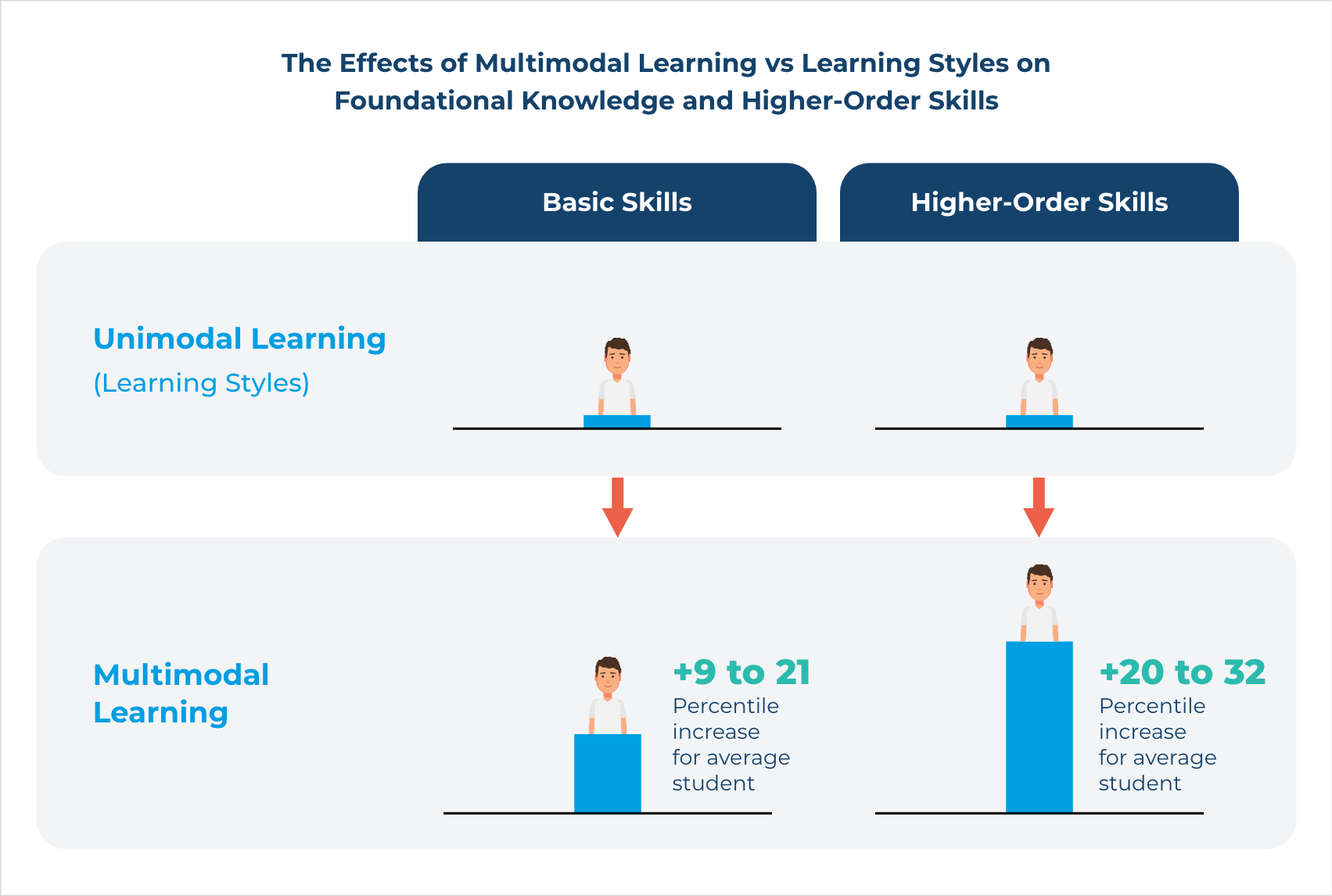

Source: Adapted from Metiri Group – Commissioned by Cisco. Multimodal learning through media: What the research says. Curriculumredesign.org. Accessed August 10, 2023.
In conclusion, the learning styles theory, while popular, has been widely debunked for various reasons including limiting educators’ scope and hindering learners’ potential. Educators can counter those effects by embracing a multimodal approach to deliver instructions and guide learning. Enhancing the classroom experience will enrich the learning process and meet the needs of all learners, leading to improved learning outcomes.
Multimodal
Learning Strategies
for Teaching
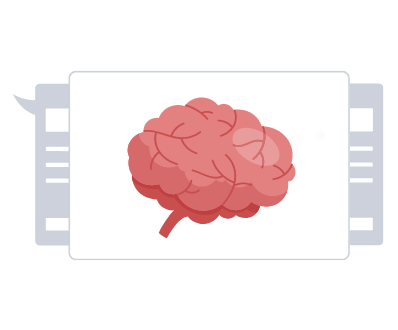
In conclusion, the learning styles theory, while popular, has been widely debunked for various reasons including limiting educators’ scope and hindering learners’ potential. Educators can counter those effects by embracing a multimodal approach to deliver instructions and guide learning. Enhancing the classroom experience will enrich the learning process and meet the needs of all learners, leading to improved learning outcomes.
Multimodal
Learning Strategies
for Teaching

Learn how an e-learning solution built on cognitive science and powered by data analytics lets you easily integrate multimodal learning into your curriculum to steer success for your program.
References
1 Pashler H, McDaniel M, Rohrer D, Bjork R. Learning styles: Concepts and evidence: Concepts and evidence. Psychol Sci Public Interest. 2008;9(3):105-119. doi:10.1111/j.1539-6053.2009.01038.x
2 Coffield, F., Moseley, D., Hall, E., & Ecclestone, K. (2004). Should we be using learning styles. London Learning and Skills Research Centre. – References – Scientific Research Publishing. Scirp.org. Accessed August 8, 2023. https://www.scirp.org/reference/referencespapers?referenceid=589605
3 Armstrong SJ, Peterson ER, Rayner SG. Understanding and defining cognitive style and learning style: a Delphi study in the context of educational psychology. Educ Stud. 2012;38(4):449-455. doi:10.1080/03055698.2011.643110
4 Riener C, Willingham D. The myth of learning styles. Change. 2010;42(5):32-35. doi:10.1080/00091383.2010.503139
5 Krätzig GP, Arbuthnott KD. Perceptual learning style and learning proficiency: A test of the hypothesis. J Educ Psychol. 2006;98(1):238-246.doi:10.1037/0022-0663.98.1.238
6 Dekker S, Lee NC, Howard-Jones P, Jolles J. Neuromyths in education: Prevalence and predictors of misconceptions among teachers. Front Psychol. 2012;3. doi:10.3389/fpsyg.2012.00429
7 Geake J. Neuromythologies in education. Educ Res (Windsor). 2008;50(2):123-133. doi:10.1080/00131880802082518
8 Dweck, C. S. (2006). Mindset: The new psychology of success Random House.
9 Yeager DS, Hanselman P, Walton GM, et al. A national experiment reveals where a growth mindset improves achievement. Nature. 2019;573(7774):364-369. doi:10.1038/s41586-019-1466-y
10 Abuso FA. Reforming instructional practices via interactive engagement, deliberate practice and coaching in professional education courses. Am J Educ Res. 2017;5(9):959-964. doi:10.12691/education-5-9-5
11 Multi-Modal Learning David Lazear. Davidlazeargroup.com. Accessed August 8, 2023. http://www.davidlazeargroup.com/free_articles/multi-modal.html
12 Mayer RE.Multimedia Learning.3rd ed. Cambridge University Press; 2020.
13 Goel H, Yang A, Bryan M, et al. The Picmonic® Learning System: enhancing memory retention of medical sciences, using an audiovisual mnemonic Web-based learning platform. Adv Med Educ Pract. 2014;5:125. doi:10.2147/amep.s61875
14 Moro C, Smith J, Stromberga Z.Multimodal learning in health sciences and medicine: Merging technologies to enhance student learning and communication. In: Advances in Experimental Medicine and Biology. Vol 1205. Springer International Publishing; 2019:71-78.
![How Educators Can Recognize and Help Students with Trauma [Webinar]](https://truelearn.com/wp-content/uploads/2020/11/Educator-Webinar-How-Educators-Can-Recognize-and-Help-Students-with-Trauma.png)
